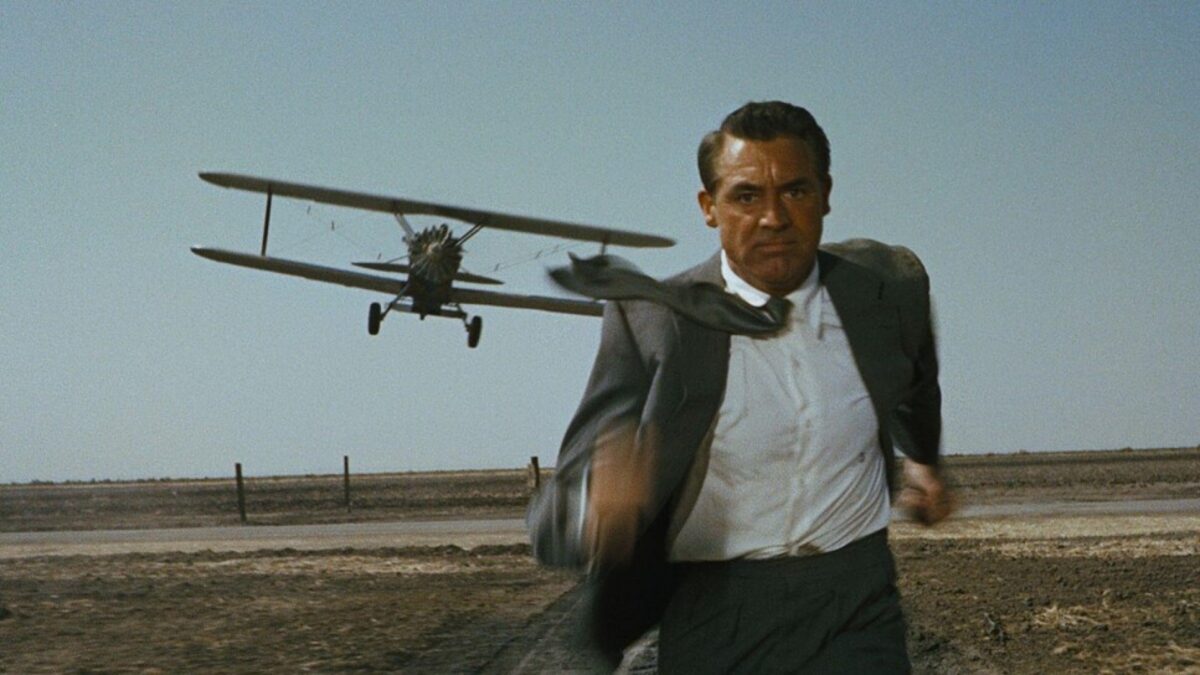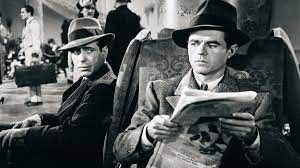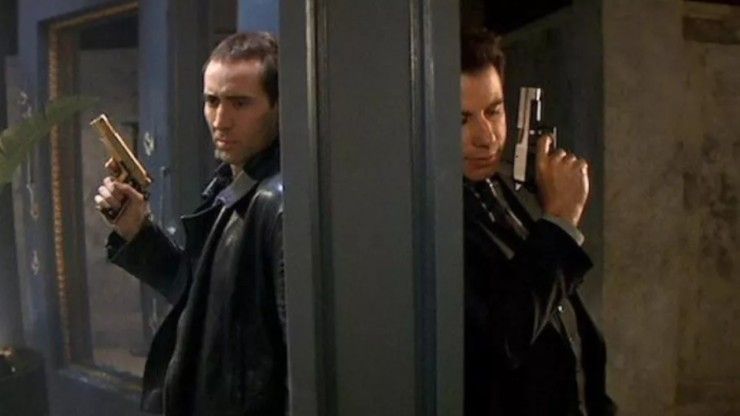
Get ready for the chase of a lifetime.
The “Cat and Mouse” genre is a classic theme in movies and TV that has been used in many different ways to create suspense, thrills, and drama. Whether it’s a detective chasing a criminal, a protagonist trying to clear their name, or a high-stakes heist that’s gone wrong, the Cat and Mouse genre is characterized by its use of tension, psychological games, and a constant sense of pursuit and evasion.
In this article, we’ll explore the origins of the Cat and Mouse genre, its defining tropes and characteristics, and provide examples of some of the most iconic movies and TV shows that use this theme to great effect.
Whether you’re a fan of suspenseful thrillers or looking to incorporate this genre into your own writing or directing, this article will provide you with a comprehensive guide to the Cat and Mouse genre.
Let’s get started.
Define the Cat and Mouse Genre in Movies and TV Shows
What makes the Cat and Mouse genre so special is its ability to create tension, suspense, and psychological games that keep audiences engaged and on the edge of their seat.
This genre typically features a pursuit between a pursuer and a pursued character, with high stakes and complex motivations driving the action. The dynamic between the two characters creates a sense of anticipation and uncertainty, making this genre a popular choice for crime, thriller, and action movies and TV shows.
The Cat and Mouse genre has a long history in popular culture, and its enduring appeal continues to captivate audiences around the world.
So how would you define it?
The Cat and Mouse Genre Definition
The Cat and Mouse genre in movies and TV shows typically involves a game of wits and strategy between two characters, where one character (the “cat”) is relentlessly pursuing the other (the “mouse”) with the intention of catching or defeating them. The genre typically features tense and suspenseful scenes, with the mouse character constantly trying to stay one step ahead of the cat.
This genre can be found in a wide range of settings and contexts, including crime thrillers, espionage movies, and even horror films.
In many cases, the Cat and Mouse genre explores larger themes such as power, control, and the human psyche. The genre can also feature complex and nuanced characters, with the audience often torn between rooting for the cat or the mouse.

The Cat and Mouse Genre Origins
The origins of the Cat and Mouse genre can be traced back to ancient myths and fables that depict animals engaging in similar games of pursuit and evasion. For example, in Aesop’s fable The Cat and the Mouse, the cat attempts to catch the mouse but ultimately fails.
In literature, the Cat and Mouse trope can be found in the works of Shakespeare, such as in Macbeth, where Macbeth hunts down his enemies while they try to elude him.
In film, the Cat and Mouse genre emerged in the early days of Hollywood, with films such as The Cat and the Canary (1927) and The Bat (1926) featuring similar themes of suspense and pursuit.
However, it wasn’t until the 1940s and 1950s that the Cat and Mouse genre really took off, with film noirs like The Maltese Falcon (1941) and The Big Sleep (1946) setting the tone for the genre. These films often featured hard-boiled detectives pursuing elusive criminals, and the genre continued to evolve and expand over the years, encompassing a wide range of settings and characters.

The Cat and Mouse Genre Tropes
The ‘Cat and Mouse’ genre is characterized by several common tropes that help to create the tension and suspense that define the genre. Here are some of the most common tropes found in this genre:
-
Pursuit and Evasion: This is the fundamental trope of the genre, where one character (the cat) pursues another character (the mouse) who is trying to evade capture. The tension arises from the constant threat of capture and the uncertainty of whether the mouse will be able to escape.
-
The Chase Scene: This is a staple of the genre and often involves a high-speed pursuit through a crowded urban environment or a winding, treacherous road. The chase scene is usually accompanied by tense music and fast-paced editing, heightening the sense of danger and excitement.
-
Mind Games: In the ‘Cat and Mouse’ genre, the mouse often tries to outsmart the cat by using their wits and cunning to stay one step ahead. This can involve elaborate traps, misdirection, or psychological manipulation.
-
The Double-Cross: Betrayal and deception are common themes in the ‘Cat and Mouse’ genre, with characters often double-crossing each other in order to gain an advantage. This can lead to surprising plot twists and turns and can keep the audience on the edge of their seats.
-
The Showdown: The ‘Cat and Mouse’ genre often builds to a climactic showdown between the cat and the mouse, where their fates are finally decided. This can take the form of a physical confrontation or a battle of wits and can provide a satisfying conclusion to the story.

The Cat and Mouse Genre Examples in TV
The Cat and Mouse genre is a popular theme in television, with many TV shows using this trope to create tension and excitement. Here are a few examples of TV shows that use the ‘Cat and Mouse’ genre:
-
Breaking Bad: This critically acclaimed series follows Walter White (Bryan Cranston), a high school chemistry teacher who becomes a drug lord, and his constant battle with the DEA agent, Hank Schrader (Dean Norris), who is hot on his trial. The show features many classic Cat and Mouse genre tropes, including pursuit and evasion, mind games, and double-crosses.
-
Sherlock: This modern adaptation of Sir Arthur Conan Doyle’s famous detective stories features the iconic duo of Sherlock Holmes (Benedict Cumberbatch) and Dr. John Watson (Martin Freeman) as they solve complex cases and track down dangerous criminals. The show often features intense Cat and Mouse chases and mind games between Holmes and his adversaries.
-
The Blacklist: This crime drama follows a former government agent, Raymond Reddington (James Spader), who turns himself in and offers to help the FBI track down a list of dangerous criminals. The show features a number of classic Cat and Mouse genre elements, including pursuit and evasion, mind games, and double-crosses.
-
Hannibal: This psychological horror-thriller follows FBI profiler Will Graham (Hugh Dancy) and his complicated relationship with the notorious cannibalistic serial killer, Dr. Hannibal Lecter (Mads Mikkelsen). The show features many classic Cat and Mouse genre elements, including intense chase scenes, mind games, and psychological manipulation.
-
Dexter: This series follows Dexter Morgan (Michael C. Hall), a forensic blood spatter analyst who also leads a secret life as a vigilante serial killer, as he tries to stay one step ahead of his coworkers and law enforcement. The show features many classic Cat and Mouse genre elements, including pursuit and evasion, mind games, and double-crosses.

The Cat and Mouse Genre Examples in Movies
The ‘Cat and Mouse’ genre is a popular theme in movies, with many films using this trope to create suspense and thrill. Here are some examples of movies that use the ‘Cat and Mouse’ genre:
-
The Fugitive (1993): This classic thriller stars Harrison Ford as Dr. Richard Kimble, a man on the run from the law after being wrongfully convicted of his wife’s murder. The film features many classic ‘Cat and Mouse’ genre elements, including pursuit and evasion, mind games, and a climactic showdown.
-
No Country for Old Men (2007): This Coen Brothers film follows a man who finds a bag of money and becomes the target of a relentless hitman played by Javier Bardem. The movie features many classic Cat and Mouse genre elements, including pursuit and evasion, mind games, and a climactic showdown.
-
The Silence of the Lambs (1991): This psychological horror-thriller stars Jodie Foster as an FBI trainee who seeks the help of cannibalistic serial killer Dr. Hannibal Lecter, played by Anthony Hopkins, to catch another serial killer. The movie features many classic Cat and Mouse genre elements, including mind games, psychological manipulation, and a climactic showdown.
-
Catch Me If You Can (2002): This Steven Spielberg film tells the true story of Frank Abagnale Jr., a master con artist who successfully impersonated a pilot, a doctor, and a lawyer, all while being pursued by an FBI agent played by Tom Hanks. The movie features many classic Cat and Mouse genre elements, including pursuit and evasion, mind games, and double-crosses.
-
Heat (1995): This crime drama directed by Michael Mann stars Al Pacino and Robert De Niro as a police detectives and a master thief, respectively, who engage in a tense Cat and Mouse game as the detective tries to catch the thief. The movie features many classic Cat and Mouse genre elements, including pursuit and evasion, mind games, and a climactic showdown.

Tips for Writing and Directing The Cat and Mouse Genre
If you’re interested in writing and directing a story in the Cat and Mouse genre, here are some tips to help you create a thrilling and engaging story:
-
Establish the stakes: In order for the Cat and Mouse dynamic to work, the stakes need to be high. Whether it’s a dangerous criminal on the loose, a high-stakes heist, or a wrongfully accused protagonist, the audience needs to feel invested in the outcome of the chase.
-
Create compelling characters: The characters in a Cat and Mouse story are often what make it memorable. Consider giving both the pursuer and the pursued complex motivations, vulnerabilities, and backstories to make them more interesting and relatable.
-
Use tension and suspense: The key to a successful Cat and Mouse story is building tension and suspense. Use tight pacing, cliffhangers, and twists to keep the audience on the edge of their seat.
-
Play with power dynamics: One of the most interesting aspects of the Cat and Mouse genre is the power dynamic between the pursuer and the pursued. Consider ways to subvert this dynamic, with the pursued gaining the upper hand or the pursuer revealing vulnerabilities or secrets.
-
Create a satisfying conclusion: A Cat and Mouse story needs to have a satisfying conclusion that ties up loose ends and delivers on the promises made throughout the story. Consider a climactic showdown, a clever twist, or a resolution that surprises the audience in a satisfying way.
-
Be innovative: While the Cat and Mouse genre has its tropes, don’t be afraid to put a new spin on them. Consider incorporating different genres, exploring unconventional characters, or playing with the structure to keep your story fresh and engaging.

Summing Up The Cat and Mouse Genre in Movies and TV
The Cat and Mouse genre is a popular theme in movies and TV that typically involves a pursuit between a pursuer and a pursued character. This genre is characterized by its use of tension, suspense, and psychological games, with the goal of keeping the audience on the edge of their seat.
The genre is often used in crime, thriller, and action movies, and can feature a range of different characters and scenarios.
To successfully create a Cat and Mouse story, it’s important to establish high stakes, create compelling characters, use tension and suspense, play with power dynamics, and create a satisfying conclusion.
Let me know what you think in the comments.














